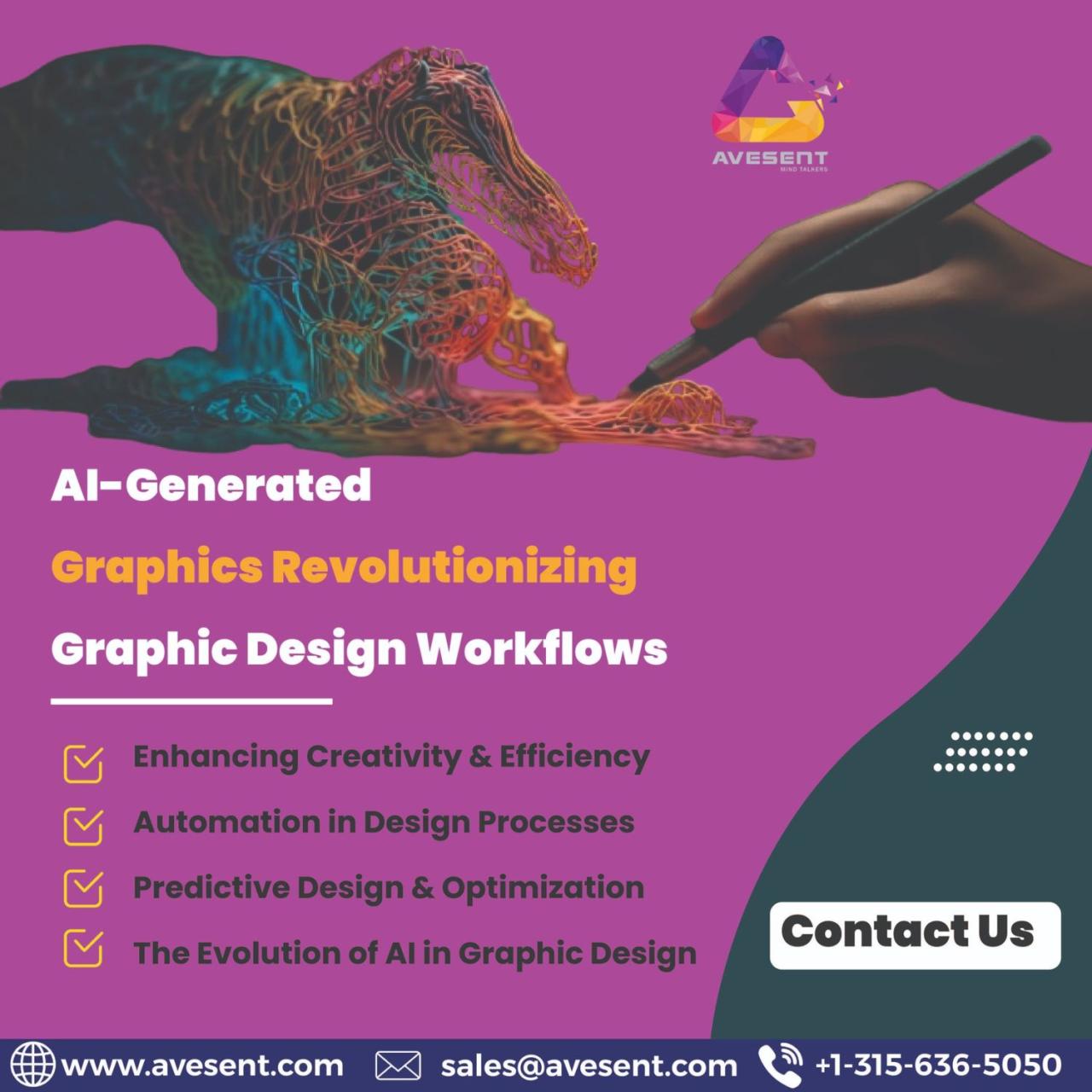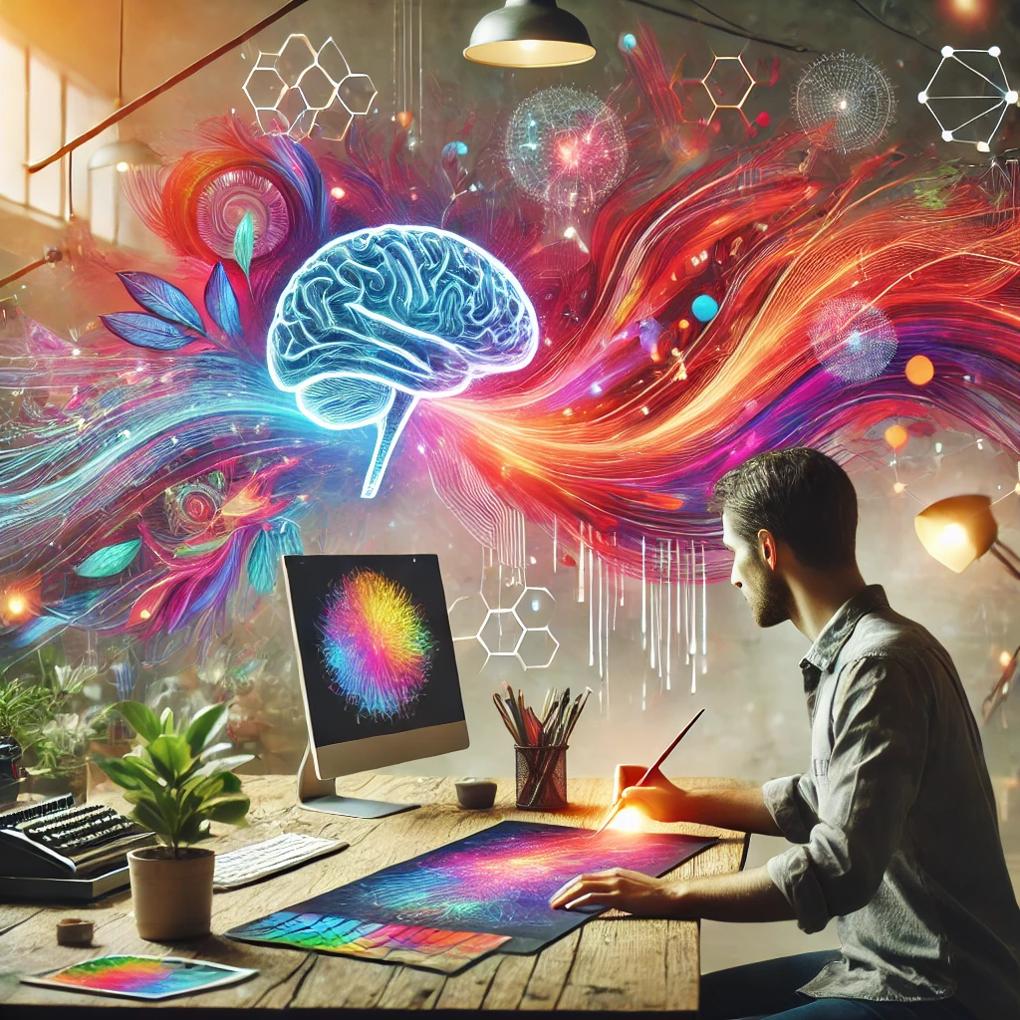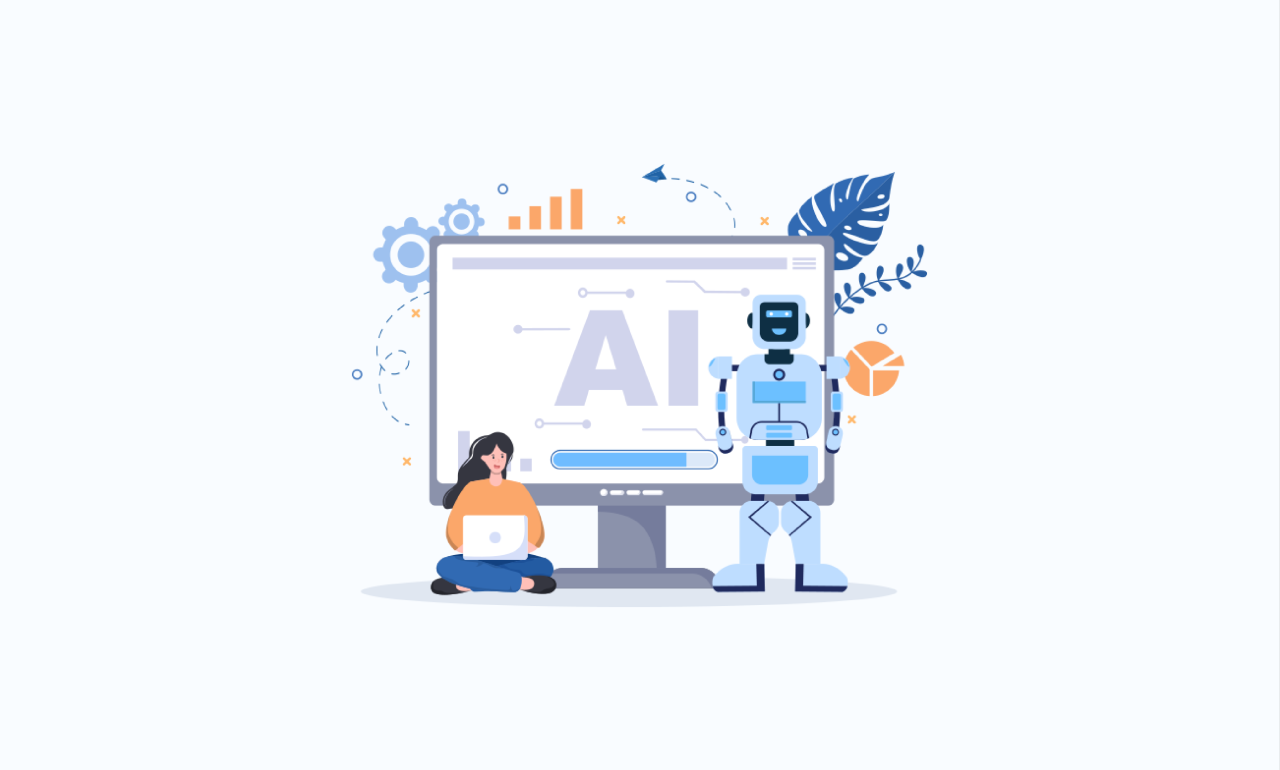How AI is transforming graphic design workflows: A Revolution in Efficiency and Creativity
How AI is transforming graphic design workflows sets the stage for this enthralling narrative, offering readers a glimpse into a story that is rich in detail and brimming with originality from the outset.
The impact of AI on graphic design processes is profound, as automation and innovation reshape traditional workflows, ushering in a new era of design possibilities.
How AI is revolutionizing graphic design workflows
AI technology has significantly transformed the landscape of graphic design workflows, revolutionizing the way designers create and produce visual content. By leveraging AI capabilities, designers can streamline their processes, enhance creativity, and improve overall efficiency in various aspects of graphic design.
Impact of AI on the efficiency of design processes
AI has revolutionized graphic design workflows by significantly improving the efficiency of design processes. With AI-powered tools, designers can automate repetitive tasks such as image editing, color correction, and layout adjustments, allowing them to focus more on creative aspects of their work.
This automation not only saves time but also ensures a consistent level of quality across different design projects.
AI tools automating repetitive tasks in graphic design
AI tools are playing a crucial role in automating repetitive tasks in graphic design, enabling designers to work more efficiently and effectively. For example, AI-powered software can generate design variations based on specified parameters, create custom color palettes, or even suggest layout options.
These tools help designers iterate quickly, explore different design possibilities, and ultimately deliver better results in less time.
Examples of AI applications transforming graphic design workflows
Several AI applications have emerged that are transforming graphic design workflows. For instance, Adobe Sensei, an AI platform integrated into Adobe Creative Cloud, offers features like automated image tagging, content-aware cropping, and intelligent font recognition. Another example is Canva's Design AI, which provides design suggestions based on user inputs, helping designers create visually appealing graphics more efficiently.
These AI applications are reshaping the way designers work, empowering them to be more productive and innovative in their design processes.
AI-powered tools for graphic design

AI-powered tools have revolutionized the way designers work, offering a range of features that enhance creativity and productivity. These tools leverage artificial intelligence to streamline design processes and help artists bring their visions to life more efficiently.
Popular AI Tools in Graphic Design
- Adobe Sensei: Adobe's AI platform offers features like automated image tagging, content-aware fills, and font recognition, making design tasks faster and more accurate.
- Canva's Magic Resize: Canva uses AI to automatically resize designs for different platforms, saving time and effort for designers who need to create multiple versions of the same design.
- Runway ML: This tool allows designers to experiment with AI-generated art and animations, opening up new creative possibilities in graphic design.
Features of Different AI Tools
- Adobe Sensei: Known for its advanced image recognition capabilities, Adobe Sensei can analyze images and suggest design elements based on content.
- Canva's Magic Resize: Canva's AI tool excels in simplifying the process of resizing designs while maintaining the layout and proportions of the original design.
- Runway ML: Runway ML stands out for its ability to integrate machine learning models into design workflows, allowing designers to generate unique visual effects and styles.
Enhancing Creativity and Productivity
AI-powered tools in graphic design not only automate repetitive tasks but also inspire creativity by offering new design possibilities. By reducing manual workloads, designers can focus on the artistic aspects of their work, leading to more innovative and visually appealing designs.
Enhancing collaboration through AI in graphic design

AI technology plays a crucial role in enhancing collaboration among designers in graphic design projects. By automating repetitive tasks and providing intelligent insights, AI tools streamline the design workflow and improve communication between team members.
Facilitating Real-Time Collaboration
AI-powered tools enable designers to work on the same project simultaneously, regardless of their physical location. This real-time collaboration feature allows team members to share ideas, make edits, and provide feedback instantly, leading to a more efficient design process.
- Platforms like Figma and Adobe XD leverage AI to enable designers to collaborate seamlessly on design projects. These tools provide real-time updates and notifications, ensuring that all team members are on the same page throughout the design process.
- AI algorithms can analyze design preferences and suggest improvements based on user feedback, helping designers make informed decisions and iterate on designs more effectively.
Streamlining Feedback and Revisions
AI algorithms can analyze feedback from team members and stakeholders, identify patterns, and provide actionable insights to improve the design. By automating the feedback process, AI helps designers focus on creative aspects rather than administrative tasks.
- Design collaboration platforms like InVision use AI to collect feedback from various stakeholders and consolidate it into actionable insights for designers. This streamlines the feedback loop and ensures that revisions are made efficiently.
- AI-powered design tools can generate multiple design variations based on feedback, allowing designers to compare different options and choose the most effective solution for the project.
Personalization and customization in graphic design with AI
AI technology has revolutionized the way graphic design is approached, particularly in terms of personalization and customization. By leveraging AI-powered tools, designers can now create tailored design solutions for clients that meet their specific needs and preferences. This level of personalization was previously a time-consuming and labor-intensive process, but AI has streamlined the workflow and made it more efficient.
AI enabling personalized design solutions for clients
AI algorithms can analyze vast amounts of data to understand individual client preferences, including colors, styles, and layouts. This data-driven approach allows designers to create customized design solutions that resonate with the target audience on a personal level. By harnessing AI technology, designers can deliver designs that are not only visually appealing but also highly relevant to the client's brand and target market.
- AI analyzes client feedback and engagement data to tailor designs accordingly.
- Personalized design solutions lead to higher client satisfaction and brand loyalty.
- AI streamlines the design process, making it more efficient and cost-effective.
Role of AI in creating customized design elements at scale
AI has the capability to generate customized design elements at scale, allowing designers to work on multiple projects simultaneously without compromising quality. Through machine learning algorithms, AI can adapt and evolve based on feedback, continuously improving the quality of personalized design elements.
This scalability enables designers to meet the demands of a diverse client base while maintaining consistency and quality across all projects.
- AI automates repetitive tasks, freeing up designers to focus on creativity and innovation.
- Customized design elements enhance brand identity and recognition in the market.
- Scalable AI solutions ensure consistent quality and efficiency in design workflows.
Impact of AI on tailoring designs to meet individual preferences and requirements
AI plays a crucial role in tailoring designs to meet individual preferences and requirements by analyzing data and predicting trends. By understanding the unique needs of each client, AI can suggest design elements that align with their vision and objectives.
This level of customization not only enhances the overall design process but also fosters stronger client-designer relationships built on trust and mutual understanding.
- AI predicts design trends and preferences based on historical data and market analysis.
- Tailored designs cater to specific target audiences, increasing engagement and conversion rates.
- Personalized design solutions showcase the client's brand personality and values effectively.
Final Summary

As we conclude this exploration of AI in graphic design workflows, it becomes evident that the fusion of technology and creativity is propelling the industry towards unprecedented heights. Embracing AI tools not only streamlines processes but also unleashes boundless potential for designers worldwide.
Essential Questionnaire
How does AI impact collaboration among designers?
AI fosters collaboration by providing real-time feedback and facilitating seamless communication between team members, enhancing overall project efficiency.
What are some examples of AI applications transforming graphic design workflows?
Tools like Adobe Sensei and Canva's AI design assistant showcase how AI automates repetitive tasks, accelerates design processes, and augments creative capabilities.
How does AI enable personalized design solutions for clients?
AI algorithms analyze data to create tailored design elements, ensuring that each client receives a unique and customized visual experience that resonates with their preferences.




